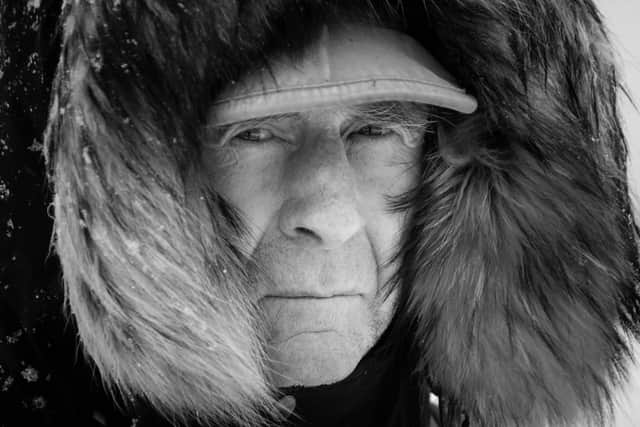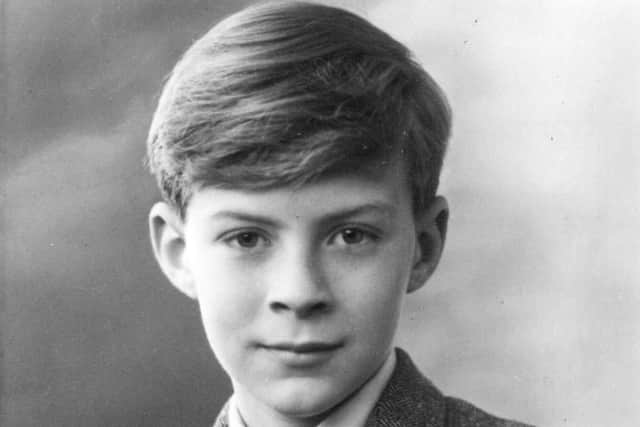Sir Ranulph Fiennes: ‘I plan to continue climbing ridges until I’m in my mid-80s’


Sir Ranulph Fiennes has had an extraordinary life.
The 78-year-old, who prefers to go by Ran, was the first to circumnavigate the globe on its polar axis, has discovered a lost city, completed unsupported polar expeditions, run seven marathons in seven days on seven continents, climbed the Eiger by its precipitous North Face, reached the summit of Mount Everest at the age of 65, and more – remaining hungry for adventure well into his seventies.
He has undoubtedly earned the moniker “the world’s greatest living explorer”, having traversed remote parts of the globe where no-one had set foot before.


Advertisement
Hide AdAdvertisement
Hide AdBut one monumental question remains on everyone’s lips: why attempt such dangerous expeditions?
In new feature-length documentary Explorer, director Matt Dyas takes a look at the man behind the missions, delving into his motivations, family life, triumphs and mistakes to create a portrait of the incredible explorer.
“I think I’m more interested in the character of who somebody is, rather than where they’ve been,” says Dyas, who has previously worked on award-winning films with Professor Brian Cox and Sir David Attenborough.
“As much as there were the expeditions, these extraordinary trips, I wanted to get behind that and find out what made him tick.
Advertisement
Hide AdAdvertisement
Hide Ad“You just can’t help but be drawn to the character as soon as you start to scratch away, and find all this depth and intrigue and these things that you assumed, that aren’t right. That’s where it started to get really interesting.”
Watching decades of film footage dating back to Sir Ranulph’s childhood – including childhood videos of his late wife Ginny, who he met when he was 12 and she was nine – was certainly no mean feat for the filmmakers, but also a unique experience for Sir Ranulph himself, not least because he actually filmed some of it himself.
“On one particular expedition, I think in the 60s, the cameraman who had been sent got badly burnt and had to be evacuated.
“And before he left with his hands all up and burns all over his body from the Nile expedition, basically he said: ‘Ran, I’m leaving you my cameras’,” the explorer reveals.
Advertisement
Hide AdAdvertisement
Hide Ad“And I said: ‘Well, I can’t work a camera, I don’t know about cameras’, and he said: ‘Well, this knob, you do this, that and the other. You can have that lens or this lens or whatever’.
“So for the next 20 years of expeditions, when we didn’t have somebody from a newspaper or TV or the BBC or ITV or Terry Lloyd from ITN, I was doing stuff. When we eventually gave it all to the British Film Institute, a lot of that stuff I had been actually filming.
“To have a film made of my life meant I could look back at early stuff, including of my late wife Ginny, going back to when she was nine and I first met her when I was 12 – all that sort of stuff was very fascinating to me, because of my earlier involvement with the same thing.”
“He’s also really good with the camera, he would never say it, but he’s very good with the camera,” smiles Dyas.
Advertisement
Hide AdAdvertisement
Hide Ad“Some of that stuff in Oman that’s in there, in the desert with the guys coming across the top of the dune, it’s all so beautifully shot. He’s got an eye for filming.
“I remember going through that footage and also seeing the trust he had, a little bit like the trust I have with Ran, he had the trust with his guys, his soldiers, the guys he was working with out there.
“And it comes across – their smiles, the way they look at the camera.
“They’re all enjoying each other’s company.
“I loved that bit in particular, the way he filmed that.”
Interjected between clips from his incredible feats of exploration are candid conversations in which Sir Ranulph opens up about fear, triumph and injuries – such as the time he amputated his own necrotic fingertips after severe frostbite sustained in an attempt to walk solo and unsupported to the North Pole.
Advertisement
Hide AdAdvertisement
Hide AdIt’s perhaps unsurprising, then, that one of the main things Sir Ranulph took from the documentary-making experience was a lesson about mistakes: at 78, he says he’s still planning expeditions informed by the lessons he’s learned over the years.
“I think that what expeditions that we may or may not be planning at this moment could be affected by having seen the film,” the explorer says.
“I don’t know what might change in the future, but I’m sure that one or two things will.
“In terms of selecting people on the team… the thing is, what we do, we choose one out of maybe six wrong people, that’s a mistake that will cost the entire expedition.
Advertisement
Hide AdAdvertisement
Hide Ad“Just one person who can’t take it any longer, dropping out in a place like that.
“That’ll be it. So it could be that what I’ve looked at, the film: ‘Oh, I never thought about that before. Next time we’ll get that right’.”
Sir Ranulph will forever be remembered as one of the world’s greatest explorers – though the modest adventurer is quick to say that he’d be “embarrassed” if people thought he had “invented that title to suit myself”.
And he pledges to continue climbing his favourite ridges until his mid-80s, at which point he’ll “have to find something else” – maybe, he wryly suggests, he’ll try Ben Nevis.
*Explorer is in cinemas now.
Comment Guidelines
National World encourages reader discussion on our stories. User feedback, insights and back-and-forth exchanges add a rich layer of context to reporting. Please review our Community Guidelines before commenting.